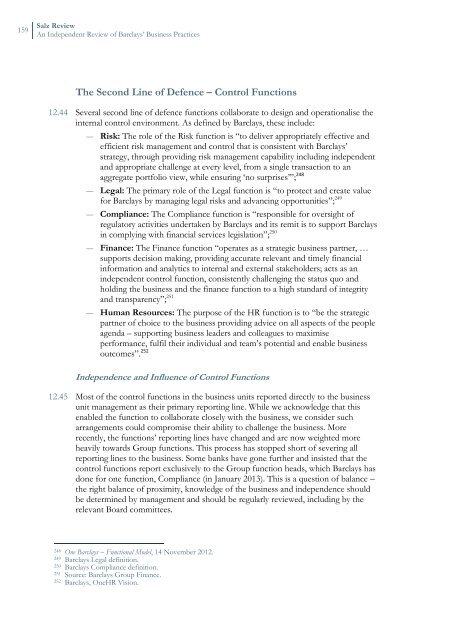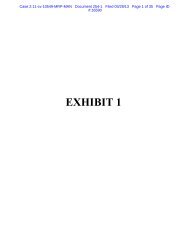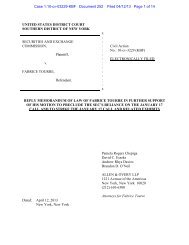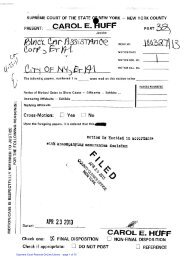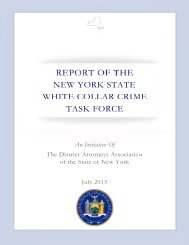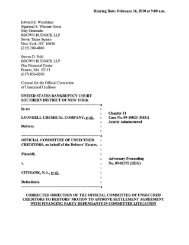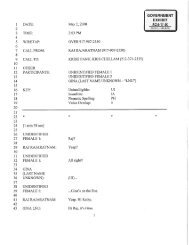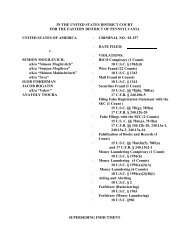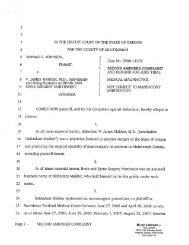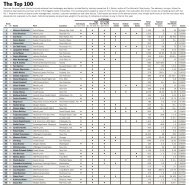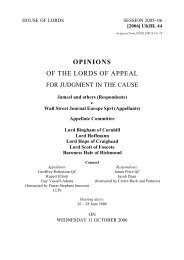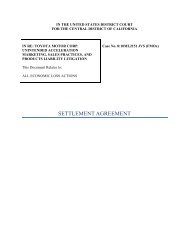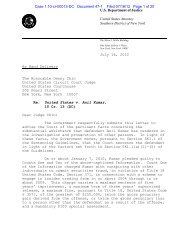Salz Review - Wall Street Journal
Salz Review - Wall Street Journal
Salz Review - Wall Street Journal
Create successful ePaper yourself
Turn your PDF publications into a flip-book with our unique Google optimized e-Paper software.
159<br />
<strong>Salz</strong> <strong>Review</strong><br />
An Independent <strong>Review</strong> of Barclays’ Business Practices<br />
The Second Line of Defence – Control Functions<br />
12.44 Several second line of defence functions collaborate to design and operationalise the<br />
internal control environment. As defined by Barclays, these include:<br />
― Risk: The role of the Risk function is “to deliver appropriately effective and<br />
efficient risk management and control that is consistent with Barclays’<br />
strategy, through providing risk management capability including independent<br />
and appropriate challenge at every level, from a single transaction to an<br />
aggregate portfolio view, while ensuring ‘no surprises’”; 248<br />
― Legal: The primary role of the Legal function is “to protect and create value<br />
for Barclays by managing legal risks and advancing opportunities”; 249<br />
― Compliance: The Compliance function is “responsible for oversight of<br />
regulatory activities undertaken by Barclays and its remit is to support Barclays<br />
in complying with financial services legislation”; 250<br />
― Finance: The Finance function “operates as a strategic business partner, …<br />
supports decision making, providing accurate relevant and timely financial<br />
information and analytics to internal and external stakeholders; acts as an<br />
independent control function, consistently challenging the status quo and<br />
holding the business and the finance function to a high standard of integrity<br />
and transparency”; 251<br />
― Human Resources: The purpose of the HR function is to “be the strategic<br />
partner of choice to the business providing advice on all aspects of the people<br />
agenda – supporting business leaders and colleagues to maximise<br />
performance, fulfil their individual and team’s potential and enable business<br />
outcomes”. 252<br />
Independence and Influence of Control Functions<br />
12.45 Most of the control functions in the business units reported directly to the business<br />
unit management as their primary reporting line. While we acknowledge that this<br />
enabled the function to collaborate closely with the business, we consider such<br />
arrangements could compromise their ability to challenge the business. More<br />
recently, the functions’ reporting lines have changed and are now weighted more<br />
heavily towards Group functions. This process has stopped short of severing all<br />
reporting lines to the business. Some banks have gone further and insisted that the<br />
control functions report exclusively to the Group function heads, which Barclays has<br />
done for one function, Compliance (in January 2013). This is a question of balance –<br />
the right balance of proximity, knowledge of the business and independence should<br />
be determined by management and should be regularly reviewed, including by the<br />
relevant Board committees.<br />
248 One Barclays – Functional Model, 14 November 2012.<br />
249 Barclays Legal definition.<br />
250 Barclays Compliance definition.<br />
251 Source: Barclays Group Finance.<br />
252 Barclays, OneHR Vision.


